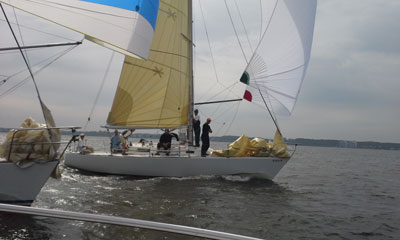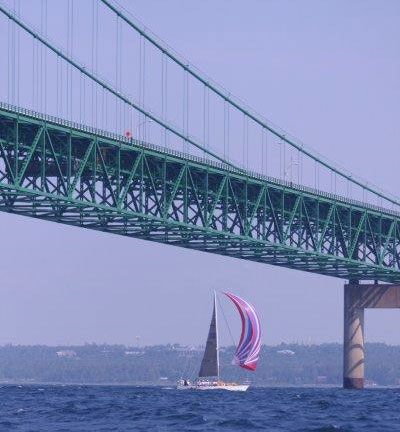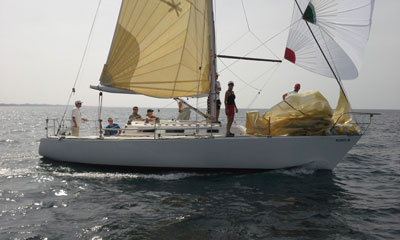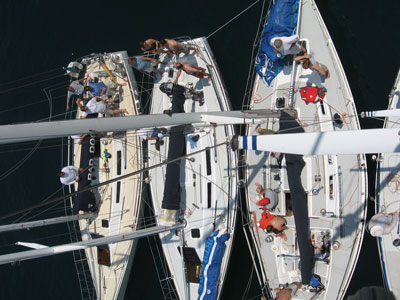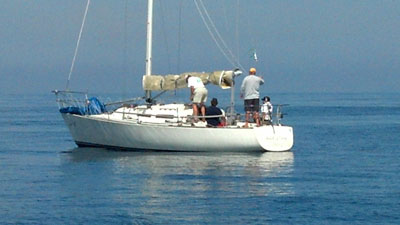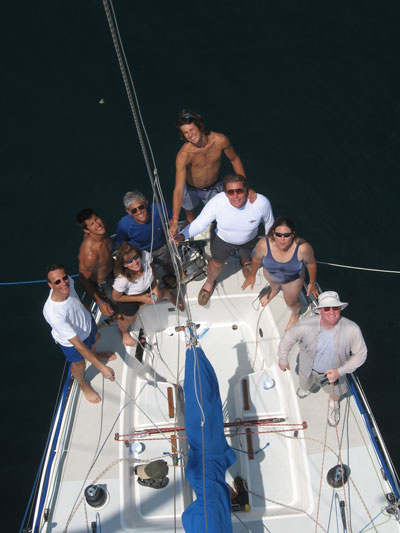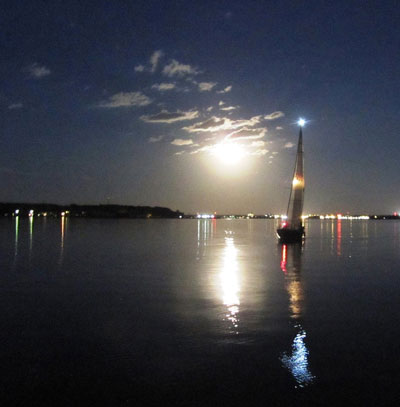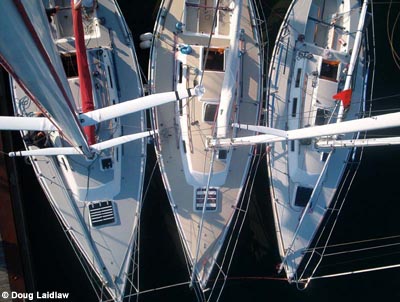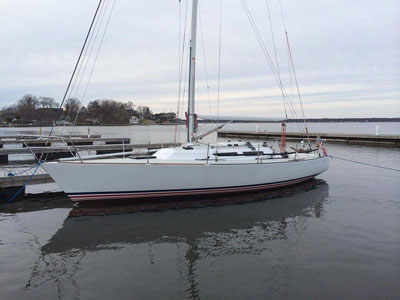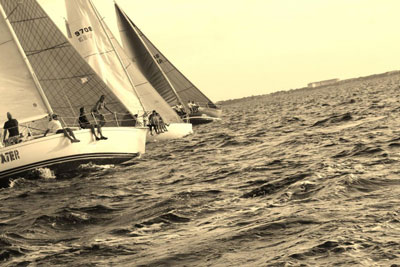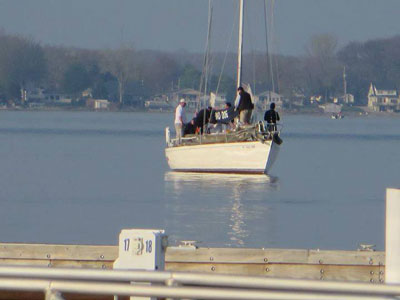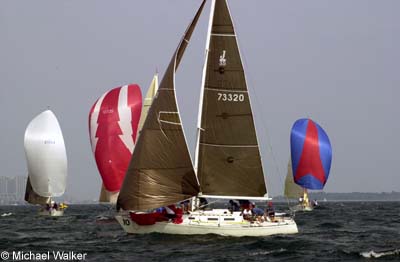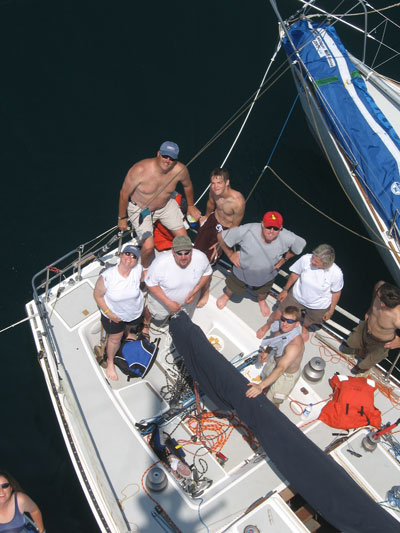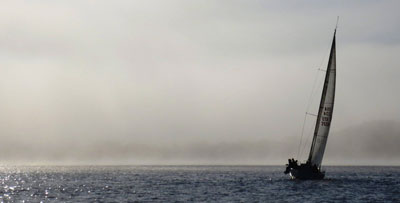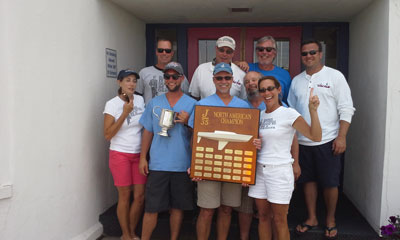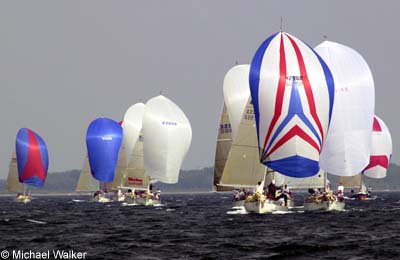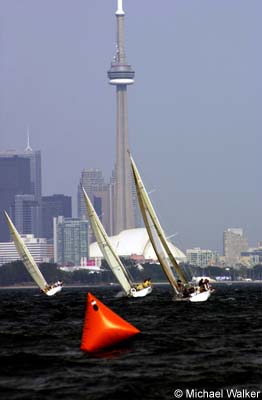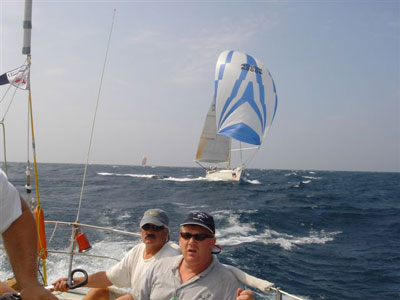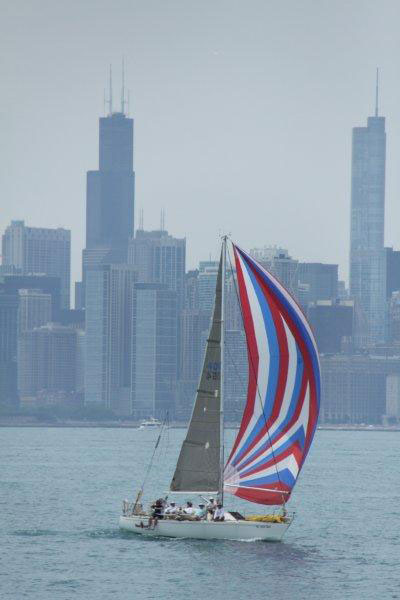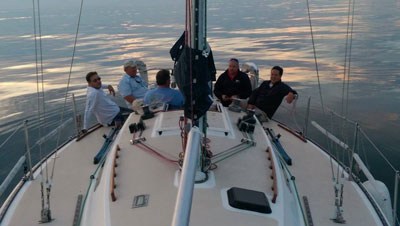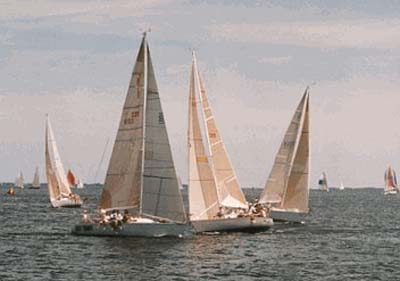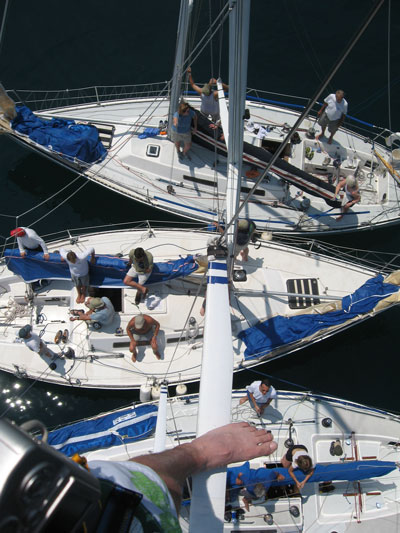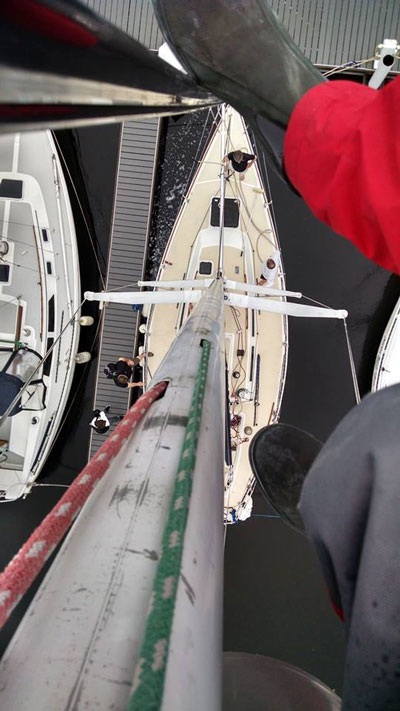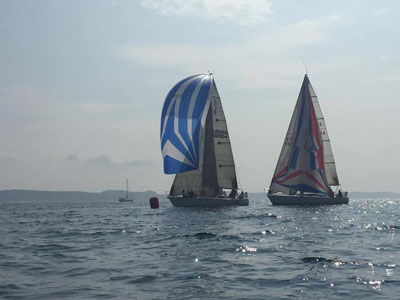 |
To honour a boat that has earned lasting recognition by fostering new enjoyment and growth in the sport of sailing through excellent design and production integrity. by Bill Schanen, Sailing Magazine |
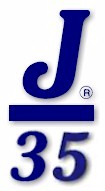 |
It is probably safe to say that no racer/cruiser in the annals of fiberglass production elevated the self-esteem of sailors as dramatically as the J/35. When it was introduced in the spring on 1983, it was the closest thing ever seen to instant gratification in an offshore handicap racer and one design. If it is an exaggeration to say that new owners stepped aboard, raised the sails and began winning races, it is a small one.
What made the J/35's dazzling performance so accessible to sailors of varying experience and ability? Primarily it was its pure hull form, a sweet, easily driven shape free of the rating rule-induced exaggerations that made other handicap racers of the 1980s cranky and difficult to sail. With its light weight and sensible rig layout, the J/35 was graced with a responsive yet forgiving nature over a wide range of conditions.
These endearing characteristics gave the J/35 a parallel life as a cruising boat. Easily handled by a family, it offered plenty of space below for accommodations that were plain but practical.
The J/35 was created in response to a downturn in the US economy. To attract buyers in the offshore racer-cruiser category, the brothers who ran J Boats, Bob Johnstone, who handled marketing, and Rod Johnstone, designer of the J line, decided to modify one of Rod's earlier designs, the J/36. With a slightly shorter hull, improved keel with a lower center of gravity and a masthead, instead of fractional, rig and cost reductions realized by eliminating wheel-steering and making some cabin amenities optional, the new 35 footer, offered at a base price of $49,500 ($30,000 less than its predecessor) was an instant hit. More than 170 boats (built by TPI) were sold in the first three years; there are more than 300 sailing today. J/35s are eagerly sought on the used boat market, selling for $60,000 to $85,000 - about what many of them cost, fully equipped, when new.
One design racing activity has been strong since the J/35 debuted - as many as three dozen of the powerful 35 footers have been on the starting line for class championships (1995 North Americans, Rye, NY). The fact that the field is more level in J/35 class racing because of the boat's forgiving nature has not deterred some of the world's top sailors from competing in class events.
The boat's greatest impact, however, has been in handicap racing. How ironic that this boat designed with a conscientious disregard for any handicap rule is one of the most successful handicap racing boats ever. It has taken honors in major offshore races around the world, including even the single-handed transatlantic race. It is the most popular racer-cruiser rated by the IMS. In spite of a challenging PHRF rating more common to 40-footers, the J/35 remains a perennial winner in club racing.
Mainly, though, the J/35's appeal endures today for the same reason the boat was immediately popular with it was introduced 16 years ago - because, in the words of Bob Johnstone, it is "a magical boat that turns good sailors into great sailors".
Selection Committee and Standards
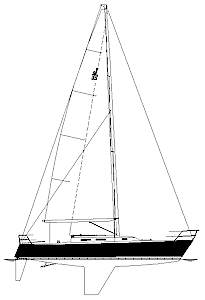
Sail America has selected 16 boats for induction into the American Sailboat Hall of Fame since its founding in 1994. To be considered for the American Sailboat Hall of Fame, a boat must be an American built sailboat introduced at least 15 years ago that meets the standard set by the board of directors of Sail America when the Hall of Fame was established in 1994." "A boat that has earned lasting recognition by fostering new enjoyment and growth in the sport of sailing through excellent design and product ingenuity."
These Hall of Fame boats are true American classics, exemplars of the extraordinary skill and ingenuity of American boatbuilders. They range in size from 8 to 41 feet. Several date to the dawn of the fiberglass era and are considered collector's items; others are still in production, selling briskly. All have profoundly influenced the sport of sailing. By their sheer excellence, they have made sailing better. Other boats honored include the Sunfish, Triton, Laser, Santa Cruz 27, Cal 40, Morgan Out Island 41, Hobie 16, Valiant 40 and the Windsurfer.
Selection for the Hall of Fame were made by a committee of magazine editors, comprised of Bill Schanen, Sailing Magazine, chairman; John Burnham, Sailing World; and Patience Wales, Sail. Half-models of Hall of Fame boats are displayed each year at Sail Expo and are on permanent display at the Museum of Yachting in Newport, Rhode Island.


